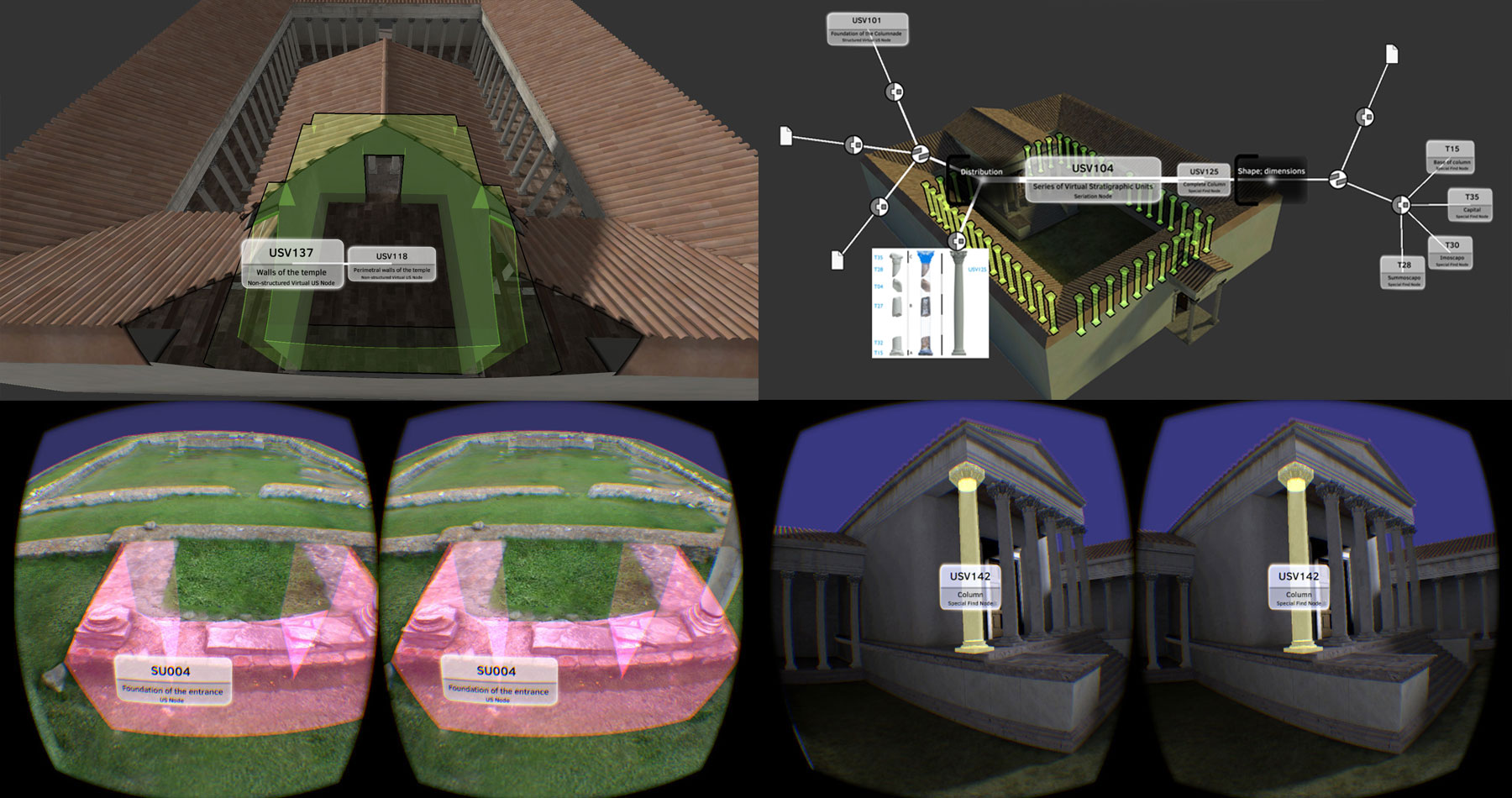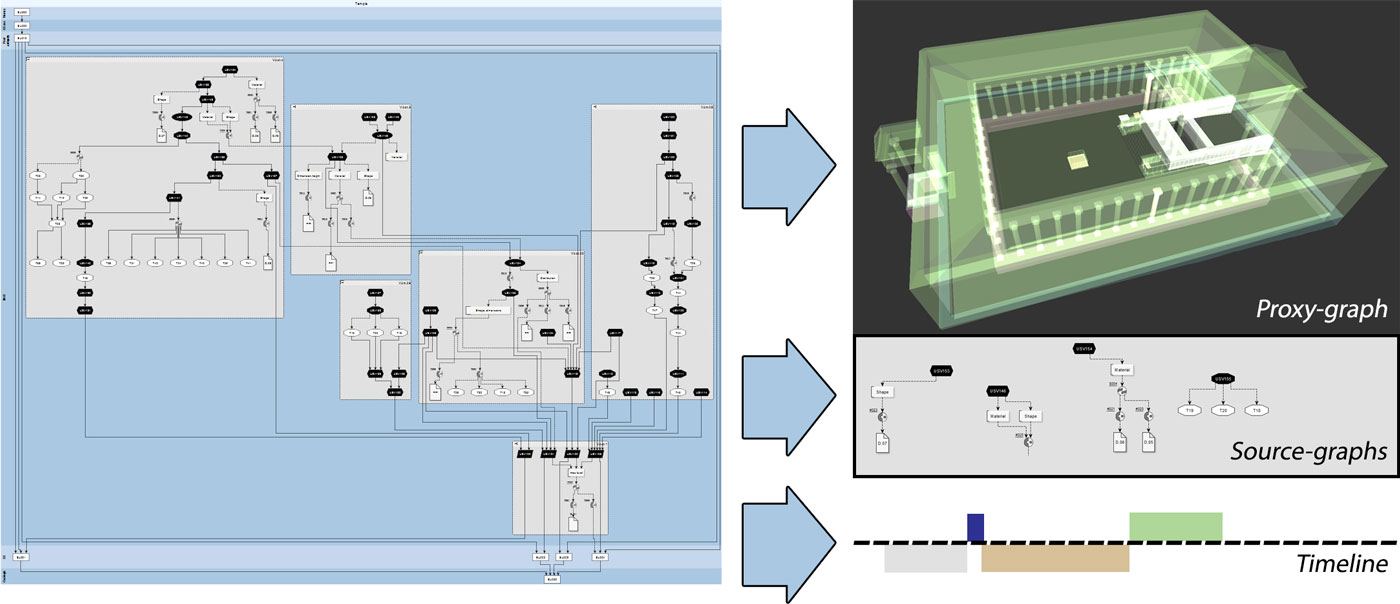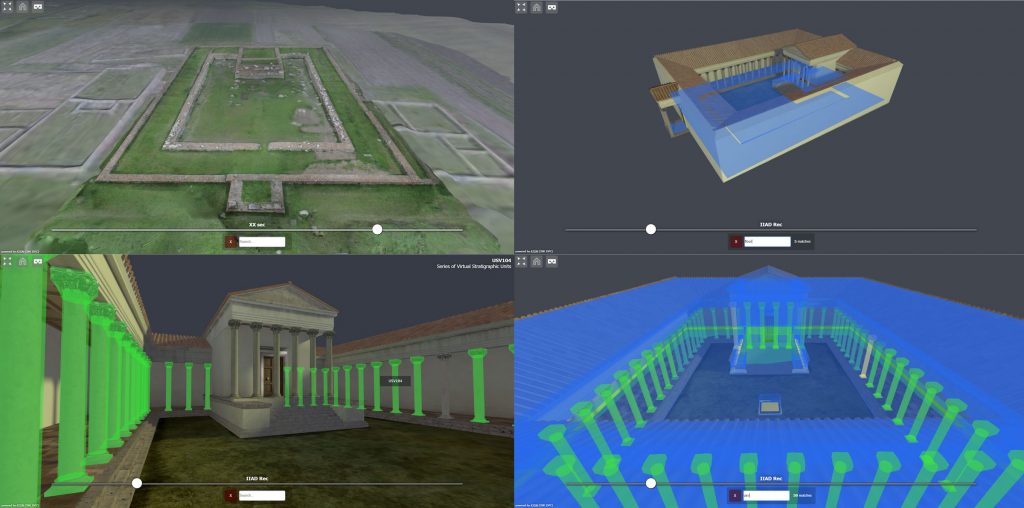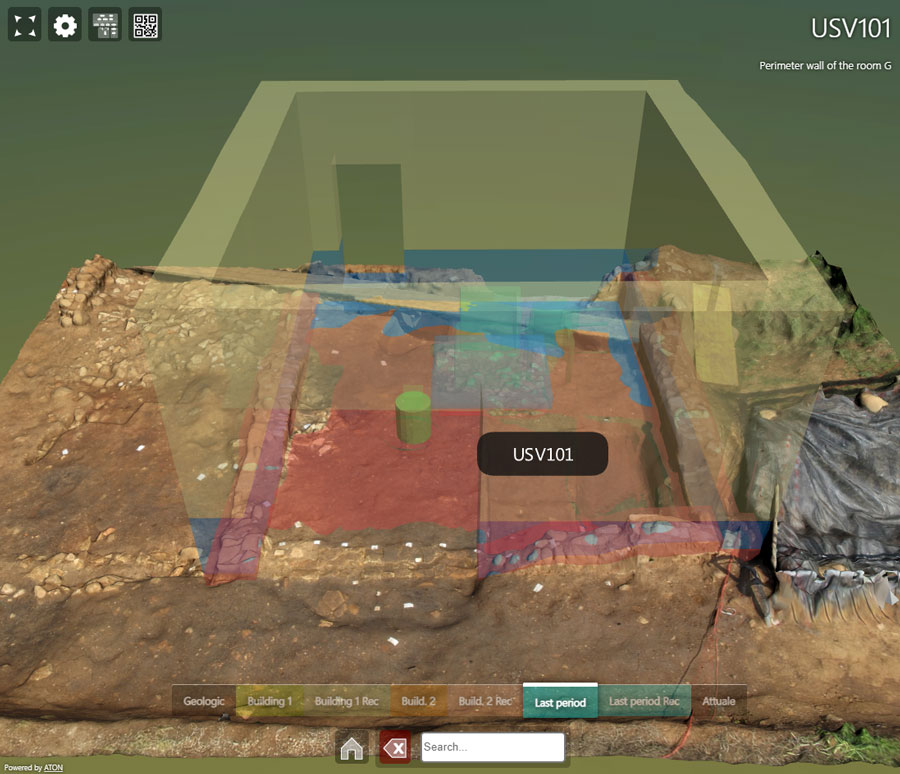EMviq (Extended Matrix Visual Inspector and Querier) is a complete, interactive 4D visualization and runtime interrogation tool developed by B. Fanini (CNR ISPC) for Extended Matrices – see Extended Matrix (E. Demetrescu, CNR ISPC) official website. The tool focuses on automatic extraction from GraphML files (EMs) targeting 3D visualization, ease-of-use and performance – in order to establish a fast and robust pipeline within a multi-disciplinary team.

In order to inspect and query at runtime a single Extended Matrix (EM) described by GraphML, the tool automagically performs a translation of the EM into appropriate runtime data structures, suitable for 3D interactive queries. These are extracted or re-computed whenever the EM is being modified:

- The Proxy-Graph: a graph for real-time queries and interrogation, handling 3D proxies objects well defined in 3D space. Generation of such graph may include procedural sub-graphs (e.g. “Seriation Node”) by procedurally instancing the referenced 3D proxy element into multiple locations, depending on transformation rules
- Source-Graphs: an internal runtime representation of EM sources relationships (paradata)
- A Timeline: a finite number of time-periods, identified by beginning and end values

EMviq (2020)
A new version of EMviq is being currently developed within SSHOC project. The new tool is completely web-based – developed on top of new ATON 3.0 framework, thus inheriting all the features offered by ATON (no installation, cross-device usage, etc.). Such tool also introduces new smart search, and it is being integrated with ownCloud and nextCloud to provide distributed workflow among remote professionals.

You can have a quick look of current working prototype here on a sample project that loads, parses and processes a sample EM (GraphML) online. You can try live smart search functionalities selecting for instance “Last Period Rec” on the timeline and searching “USV100” (single proxy), “anvil” (highligh nodes related to the anvil), “wall” – or from “Last Period” searching “ground” or “west“/”east“.
You can find the full source (GPL v3) of EMviq and deployment instructions here:
EMviq desktop (2016-2018)
The first desktop prototype of EMviq was based on OpenSceneGraph framework, PugiXML library and several C++ modules developed within osgLab suite: you can find EMviq prototype here.
References
- Demetrescu, E.; Fanini, B.; Cocca, E. (2023). An Online Dissemination Workflow for the Scientific Process in CH through Semantic 3D: EMtools and EMviq Open Source Tools. Heritage, 6, 1264-1276. https://doi.org/10.3390/heritage6020069
- Fanini, B. et al. (2022). Building Blocks for Multi-dimensional WebXR Inspection Tools Targeting Cultural Heritage. In: De Paolis, L.T., Arpaia, P., Sacco, M. (eds) Extended Reality. XR Salento 2022. Lecture Notes in Computer Science, vol 13446. Springer, Cham. https://doi.org/10.1007/978-3-031-15553-6_26
- Berto S, Demetrescu E, Fanini B, Bonetto J, Salemi G. (2021). Analysis and Validation of the 3D Reconstructive Process through the Extended Matrix Framework of the Temple of the Roman Forum of Nora (Sardinia, CA). Environmental Sciences Proceedings. 2021; 10(1):18. https://doi.org/10.3390/environsciproc2021010018
- Fanini, B., & Demetrescu, E. (2018). Carving Time and Space: A Mutual Stimulation of IT and Archaeology to Craft Multidimensional VR Data-Inspection. In International and Interdisciplinary Conference on Digital Environments for Education, Arts and Heritage (pp. 553-565). Springer, Cham.
- Demetrescu, E., & Fanini, B. (2017). A white-box framework to oversee archaeological virtual reconstructions in space and time: methods and tools – Journal of Archaeological Science: Reports, 14, 500-514
- Demetrescu, E. (2015). Archaeological stratigraphy as a formal language for virtual reconstruction. Theory and practice – Journal of Archaeological Science, 57, 42-55
